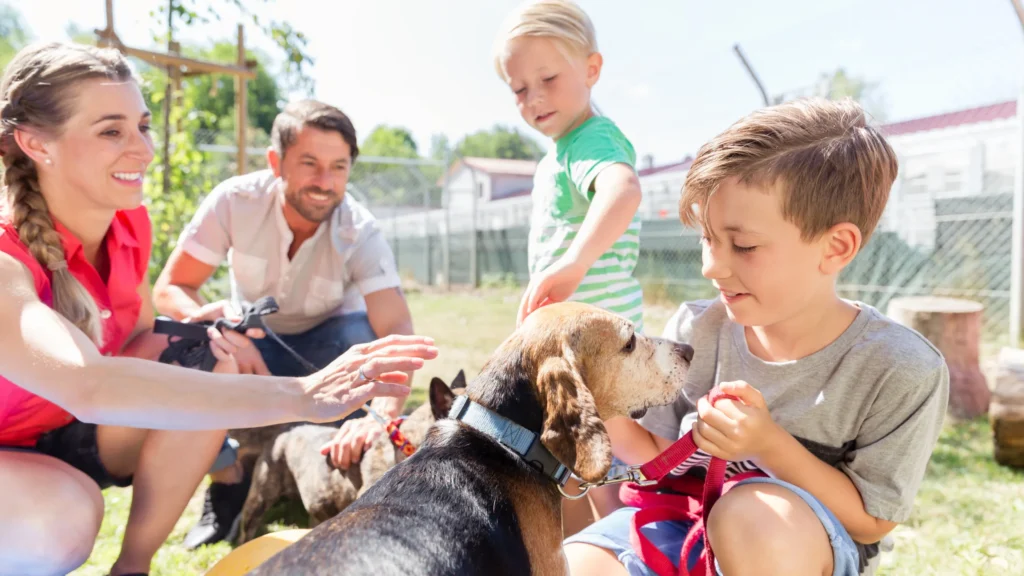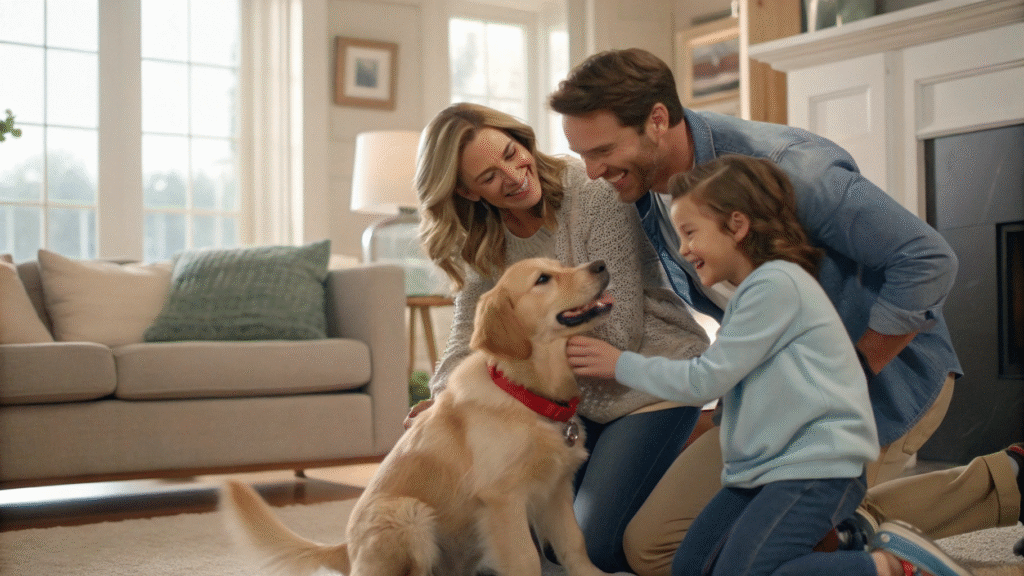Unexpected Joys, Adopting Older Pets
You’ll discover how calm, steady companions fit into your life. This guide — Unexpected Joys, Adopting Older Pets — gives quick reasons to choose a senior, shows how love often becomes a deep bond, shares short real-life stories, and explains why low fuss, big heart pets bring pure joy.
Key takeaway
- Instant, calm companionship
- Predictable personality and needs
- Less training stress and chaos
- You likely save a life and feel deep gratitude — learn more about responsible animal adoption
- Often a budget-friendly choice with clear trade-offs

Summary
Unexpected Joys, Adopting Older Pets — 5 simple reasons to choose a senior
Thinking about bringing an animal into your home? Consider Unexpected Joys, Adopting Older Pets: you get a companion with a known personality, fewer surprises, and someone ready to settle into life with you. If you need step-by-step assistance on the adoption process, a complete step-by-step adoption guide can make the logistics easier.
1) Predictable personality — know what you’re getting
- Seniors usually show fixed traits at the shelter. Want a couch buddy or a lap cat? You can see it.
- Example: a quiet 7-year-old golden who won’t chew shoes.
2) Faster bonding, less training stress
- Many are housetrained and know basic commands. Bring a familiar-smelling blanket to speed trust.
3) Lower energy, lower chaos
- Fewer zoomies and late-night wake-ups — ideal for busy households.
4) You’ll likely save a life — huge emotional payback
- Seniors are often overlooked; adopting one frees space and changes two lives. If you’re exploring ways to boost your chances of adoption success, consider reading expert tips to increase adoption success.
5) Often better for less — smart, budget-friendly choices
- Lower adoption fees, fewer replacement costs. Shelters disclose medical history and can point to low-cost clinics.
Calm, steady companions — advantages when bringing home a senior pet
Welcoming a senior pet feels like bringing home a reliable roommate. They’re steady, quieter, and often easier to integrate.
- Predictable daily rhythms: easier planning and fewer surprises
- Better manners (usually): less jumping, digging, or destructive chewing
- Lower training needs: focus on enrichment and bonding
- Great for multi-pet homes: lower risk of major clashes
- Less exercise pressure: short walks and gentle play often suffice
Practical checklist:
- Vet check within the first week for baseline health.
- Comfort first: cozy bed, familiar blanket, quiet corner — see practical home-prep ideas for senior-friendly gear.
- Keep the same food initially to avoid tummy upset.
- Slow, room-by-room exploration; supervise kid interactions — tips for a gentle transition can be found in smooth transition strategies.
- Consider low-rim beds, non-slip mats, ramps, and a raised feeding station.
Health realities (don’t panic):
- Ask for full medical records. Many seniors are spayed/neutered, vaccinated, and microchipped.
- Vet schools and low-cost clinics can lower costs; shelters and rescues sometimes share resources and financial support.
Fast love, deep bonds — bonding with a senior
Bonding with a senior often happens faster and can feel deeper because they usually know what they want: routine, comfort, and affection.
How it feels different:
- Immediate trust: a nuzzle or lean often starts the connection.
- Less trial and error: established boundaries mean more time enjoying each other.
- Visible gratitude: relief and calm in their body language.
Bonding tips:
- Keep a steady routine for feeding and walks.
- Use scent: leave a worn shirt in their bed.
- Grooming and gentle touch build trust.
- Short training sessions (10–15 minutes) with small rewards strengthen the relationship — see methods to increase your adopted dog’s happiness.
- Quiet presence matters: being nearby while reading or watching TV helps.
Dealing with grief and time limits:
- Some seniors stay many years; some for shorter times. Many adopters say the emotional rewards outweigh the pain of loss. Build a support network and consider grief resources if needed — also look at perspectives on how dogs improve your life for emotional context.
Real-life smiles — senior adoption stories
Stories stick because they show quiet transformation. Here are three short, true-to-life examples.
- The unexpected alarm clock: Nora adopted Gus, a shy 9-year-old terrier. By day three Gus gently nudged her each morning, and a calm routine grew into six happy years.
- Quiet therapy: Frank, a retiree, adopted Salem, a 12-year-old tabby with mild arthritis. Salem’s steady presence eased Frank’s loneliness.
- Kids’ gentle teacher: A busy family chose a calm 7-year-old lab mix. The dog taught the children empathy and became a beloved, patient playmate.
Common threads: small rituals matter, patience wins, and gratitude emerges. If you want a reminder that small, steady love matters, these stories point the way. For more guidance on finding the right match, see proven methods to find the perfect dog.

Low fuss, big heart — living well with a senior rescue
Adopting a senior pet gives daily benefits and dignity to an older animal. Here’s practical guidance.
Daily-life perks:
- Less supervision, quieter home, immediate companionship, often housetrained, and modest fees.
For the rescued animal:
- A safer, calmer environment and steady medical attention. Seniors relax and show personality in homes.
Everyday tips:
- Orthopedic beds, ramps, non-slip mats.
- Consistent diets and vet-approved joint or senior formulas — consider senior diet tips when adjusting meals.
- Gentle exercise: short walks, indoor play, puzzle feeders.
- Routine vet visits (twice-yearly) to catch issues early.
Health and costs:
- Common issues: dental disease, arthritis, early kidney changes, hearing/vision decline — often manageable.
- Budget for initial exams, possible dental work, and meds. Check rescue networks for financial help and adoption support hacks.
When to get help:
- Sudden behavioral changes, rapid mobility decline, or signs of pain warrant a vet visit. If costs become overwhelming, reach out to rescues or charities and review rescue group advice.
Enrichment and celebration:
- Puzzle feeders, short training, new scents, and monthly photo journals. Celebrate small wins — first lap, first stair climb, first trust gesture. For practical enrichment and transition routines, see best adoption practices and tips to smoothly transition a new pet into your home.
Resources:
- ASPCA: https://www.aspca.org/
- Humane Society senior pet tips: https://www.humanesociety.org/
- Local low-cost clinics, vet schools, and rescue groups for medical support and grants. You can also consult a complete adoption guide for local resource ideas.
Legal/practical items:
- Update microchip info, get an ID tag, and keep medical records handy.
Conclusion
You’re not settling when you choose a senior — you’re choosing calm, certainty, and a companion who already knows how to be loved. Unexpected Joys, Adopting Older Pets means fewer surprises, faster bonding, and steady everyday joy.
There are practical notes — vet checks, gentle ramps, and possibly a shorter timeline — but the payoff is real: instant companionship, visible gratitude, and the satisfaction of saving a life.
For more stories and practical tips on adoption, explore additional resources such as dog adoption tips for beginners.
Frequently asked questions
Q: Where do I find Unexpected Joys, Adopting Older Pets?
A: Check local shelters, breed rescues, online adoption sites, and ask vets or foster groups. Resources on finding the perfect adoptable dog can help.
Q: Are older pets good for first-time owners?
A: Yes. They’re often calmer and already know house rules, so there’s less chaos — see best practices for first-time adopters.
Q: Will an older pet fit into my home?
A: Usually yes. Use slow introductions, simple routines, and supervise interactions with kids and other pets — planning tips are in home preparation guides.
Q: What health costs should I expect?
A: Expect an initial vet check and possible dental or meds. Ask the rescue for records and support options; senior diet and care guidance is available at senior diet tips.
Q: How long will it take to bond?
A: Often days to weeks. Consistency, gentle touch, and routine speed the process.
Q: Can you train an older dog or cat?
A: Absolutely. Short, reward-based sessions work well — read about successful training approaches in proven adoption and training methods.
Q: What quick tips help a senior settle?
A: Provide a comfy spot, keep noise low, maintain meal and walk schedules, and offer gentle affection. For a smooth start, try the strategies in transition tips.
If you’re curious to experience the Unexpected Joys, Adopting Older Pets for yourself, local rescues and shelters are an excellent place to start.
**Sidnir Vieira**
Founder of TechHavela
A passionate pet and tech content creator, helping dog owners across the U.S. make smarter decisions for their furry friends.



